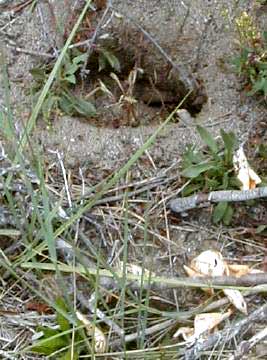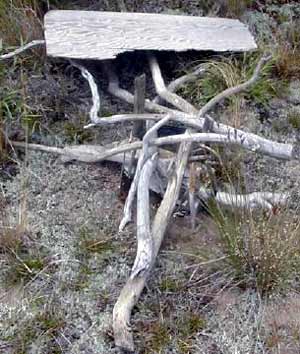All Work and No Play — 21 June 2001
 |
|
Between nesting waves, our field work focuses on finding, marking, and protecting terrapin nests that have already been laid. The easiest, but least effective, way to locate a nest is through predation — waiting for a raccoon or skunk or sundry other critter to excavate the nest chamber and destroy its contents. And, quite frankly, we find all too many nests this way without too much effort. |
The harder, but more rewarding, course is to scour miles and miles of uplands abutting Wellfleet Bay where terrapins come to nest. Through a strange alchemist’s blend of track reading and divination, we manage to locate a goodly number.

In most cases the procedure is to distinctively mark the spot and employ a temporary predator barrier until a nest protector can be installed. Some have remarked that these unique and weirdly artistic creations may be interpreted by casual observers as signs of a Salem coven revival. Whatever they may be confused for, it’s sure that they won’t be mistaken for a natural phenomenon, and they are easily identifiable by follow-on researchers lugging protectors to the site. In rare circumstances, more drastic action is demanded. Today, for instance, we discovered a nest several feet below the flood tide line — and tonight marks the new moon with better than a 12-foot tide. Here we opted to relocate the nest’s 12 viable eggs to safe site. |
|
 |
 |
|
When poking about in holes, one can never be sure precisely what will jump out at you. Most times you find nothing at all. Sometimes, if you’re real lucky, you locate a viable nest. And sometimes you find a really disturbed fellow who is totally uninterested and unimpressed with your explanation of why you interrupted his beauty rest — of which he clearly needs a lot. |
While concentrating on nesting, we haven’t abandoned our observations in the water. We took advantage of a pre-dawn low tide to work the creeks. Here researcher Maureen Ryan examines a 7-year-old male captured while running the Blackfish Creek rapids. |
|
 |

|